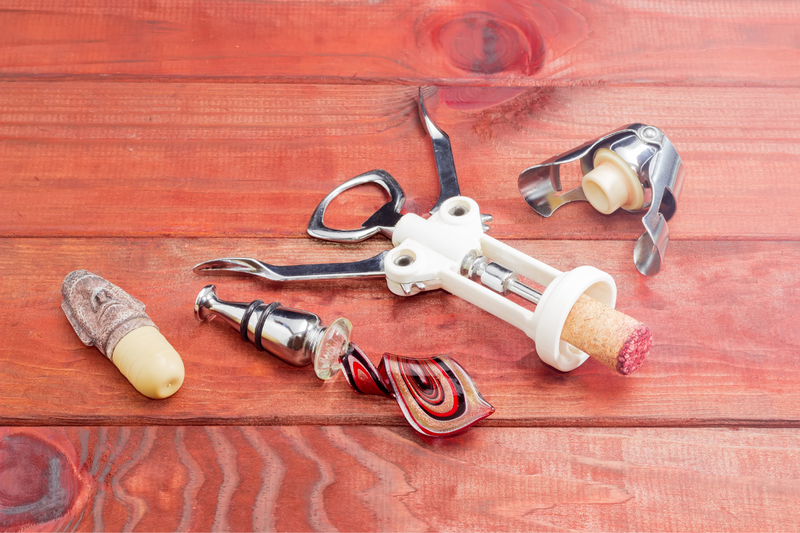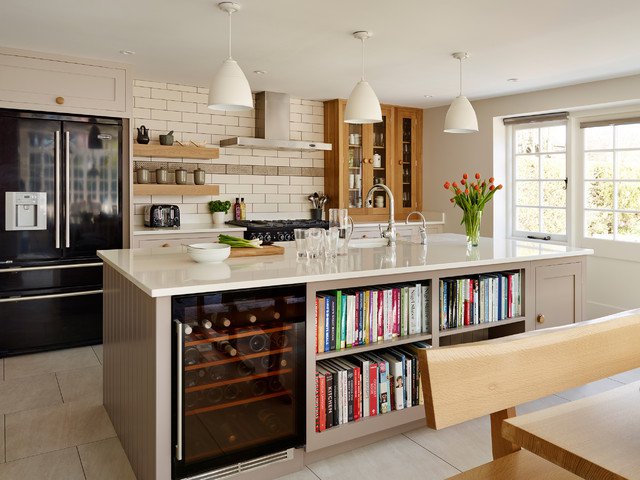Once you’ve purchased wine to enjoy at home, there are a few things to consider when it comes to wine preservation and storage. Unlike 330 ml or 473 ml bottles or cans of beer, a 750 ml bottle of wine isn’t a single serving! If you aren’t planning on finishing a bottle of wine the day that you open it, then there are a few ways to make sure your wine still tastes good in the days to follow (note that there are limitations to this!). The other factor to consider when purchasing a good bottle of wine is to make sure it is stored properly—whether you’re drinking it in a week or aging the bottle for several years—to make sure that precious liquid pours as intended. Here, we’ve outlined some of our favourite ways to preserve an open bottle of wine, as well as proper storage solutions for your cellar.

Preserving Opened Wine
Saving White, Red or Rosé Wine
So you’ve opened a bottle of wine alone or with friends and you can’t finish it that day—now what? If it’s a screw cap you could screw the cap back on, and if it’s corked, you could squeeze the cork back in the neck of the bottle. However, neither of these solutions will be super effective in keeping oxygen—the main culprit when it comes to wine going back—out of your wine. You want to have something sealing your bottle to help prevent oxygen from getting into the wine.
The Repour Wine Saver Bottle Stopper helps remove oxygen from the bottle to keep your wine lasting a bit longer. For something a bit more fancy, you can use a Vacu Vin Wine Saver/Stopper Set, where you manually suck oxygen out of the bottle with the tool while sealing it off with one of the specialty caps. In both cases, these stoppers merely slow the oxidation process, not prevent it completely, and you should plan on consuming that bottle within the next 5-7 days. (Note that you cannot use a vacuum sealer stopper with sparkling wine or carbonated beverages.) It’s also important to refrigerate your bottle with its stopper on—even red wine—so that it isn’t exposed to harmful heat or light that may affect the wine inside. When you’re ready to drink your red wine again, simply take it out of the fridge half an hour before you’re wanting to drink it so it can return to its proper serving temperature.
Another inexpensive way to preserve your wine is with the Private Reserve Wine Preserver Spray. This is essentially a can of inert, argon gas that you spray into the bottle to prevent oxygen from coming into contact with the wine. The trick with this system is to be quick, and once you’ve poured more wine out of the bottle after spraying the preserver, to spray more preserver back into the bottle as quickly as possible since more oxygen will inevitably enter. It won’t make your wine last forever, but it will help keep it fresh for five days.
The most high-tech way to preserve your wine once it has been opened is with the Coravin system, which also helps you keep a bottle of wine open for weeks, months, and even years. The trick behind this system is it doesn’t require you to remove the cork from your wine — a needle inserts into the cork to extract the wine instead, thereby limiting the amount of oxygen that can get into the wine. Of course, this high-tech gadget comes at a heftier price tag than the other solutions, but if you have a really special bottle of wine that you want to extend the drinking life of, it’s worth it.
Saving Bubbles
Sparkling wine is the hardest wine to preserve, because—just like soda—the carbonation eventually dies down and you lose those signature bubbles. Thankfully, you can keep that bottle of Champagne intact for a day or two after opening using a specialized champagne and sparkling wine stopper. These stoppers feature an air-tight rubber seal that helps preserve the carbonation and freshness of the wine. We sell three of these in store:
It’s also important when you’re saving some bubbly for later that you store the bottle in the fridge. Sparkling wine is usually served at 8 degrees Celsius, so should be stored in the fridge to preserve its freshness and signature temperature.

Photo credit: Houzz.com
Storing Wine Bottles
Whether you’re storing wine for aging or that little shelf in your fridge meant for one bottle for the weekend isn’t cutting it, here are our suggestions for effective storage of wine.
Wine Rack
A wine rack is not only practical for storing bottles of wine—it also can add to your home decor! That said, even the most stylish of wine racks don’t come without risks of negatively affecting your wine. If your rack is placed in a location with a lot of natural light, that extra heat from the sun as well as the light can damage your wine bottles. No one wants to open a bottle they’ve been storing for years to find out it’s no longer drinkable due to exposure to light and heat.
The same thing goes if the temperature in your house fluctuates drastically throughout the seasons—wine bottles are best preserved when kept at a consistent temperature. For instance—if you live in a home with no air conditioning and your space heats up in the summer months, this can negatively impact your wine on the rack.
It’s also important to note proper serving temperatures of wine. Many people believe that red wine is meant to be consumed at room temperature, but that rule comes from centuries ago when “room” temperature was more like “cellar” temperature, i.e. 16 to 20 degrees Celsius, not 24 degrees Celsius! So if you open red wine that has been sitting in the room temperature of your home, you are actually drinking it when it’s too warm. White wine and sparkling wine are meant to be served at temperatures below 12 degrees Celsius, which means that if you store them on a rack, you would have to chill them in the fridge for a few hours before being able to drink them.
While it might not help you achieve your dining room decor dreams, the ideal place for a wine rack is a place in your home where the temperature is more consistent—outside of light, and ideally in an air-conditioned space that won’t experience extra heat in summer. A basement, if you have one, is an ideal place to create a rack storage system—like your own little cellar1
Wine Fridge
If you don’t have a basement or simply want to keep your wine closer to the action, your best bet is a wine fridge! Wine fridges come in a variety of sizes and price points, and can even be built into your kitchen cabinets or island. Even if you aren’t a wine collector and have limited space in your home, you can get wine fridges that store fewer than 10 bottles. A wine fridge helps you keep your wine at a consistent temperature, which is extra essential if you’re planning on aging it for several years. It also makes it so you don’t have to chill that bottle of white, rosé or sparkling in your fridge for a few hours after taking it off of the rack—the bottle will be ready to drink!
You can even get a dual-zone wine fridge for keeping your white and red wine separate and at their own proper temperatures—set one zone between 8 and 12 degrees Celsius, and the other between 12 and 16 degrees Celsius.
Apart from the convenience, a wine fridge is the best bet to ensuring that your expensive bottle of Barolo is worth the wait when you open it in 10 years or more, since it’s been kept at a consistent temperature away from light, heat and other damaging possibilities.
Have a question about storing wine? Not sure how long you should age your recently purchased bottle? Chat with your friendly store staff at either of our Sherbrooke Liquor locations and they’ll help make sure you’re enjoying your wine at the right time, as well as storing it effectively. And if you need help finishing that half-full bottle of wine…you know you can always ask us.


